
|
Vol 70 |
Page 11 |
Privacy Policy | Editorial Policy | Profit Policy | Join the Association | List of Members | Contact us | Index | Links
Back Go to page: 1 2 3 4 5 6 7 8 9 10 11 12 13 14 15 16 17 18 19 20 Forward
Veterans and Veterans Families Counselling Service (VVCS) can be reached 24 hours a day across Australia
for crisis support and free and confidential counseling. Phone 1800 011 046.
VVCS is a service founded by Vietnam Veterans.

Health and Life-style.
Contents.
Do blood thinners stop clotting
What are the risks with sitting for too long.
Gin and Malaria (and the Corona Virus.)
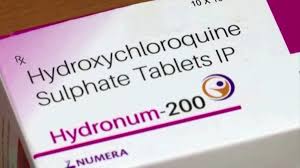
As most of us were aware, during the height of the epidemic, Hydroxychloroquine took the world by storm. Every newspaper talked about it, and all countries requested India to supply it.
Now, a curious person might wonder why and how this chemical composition is so deeply entrenched in India, and is there any history behind it.
Well, there is an interesting history behind it which goes all the way back to Tipu Sultan's defeat. In 1799, when Tipu was defeated by the British, the whole of the Mysore Kingdom with Srirangapatnam as Tipu's capital, came under British control. For the next few days, the British soldiers had a great time celebrating their victory, but within weeks, many started feeling sick due to Malaria, because Srirangapatnam was a highly marshy area with a severe mosquito trouble.
The local Indian population had over the centuries, developed self-immunity and also all the spicy food habits helped to an extent, whereas the British soldiers and officers who were suddenly exposed to harsh Indian conditions, started bearing the brunt.
To quickly overcome the mosquito menace, the British Army immediately shifted their station from Srirangapatnam to Bangalore (by establishing the Bangalore Cantonment region), which was a welcome change, especially due to cool weather, which the Brits were gravely missing ever since they had left their shores, but the malaria problem still persisted because Bangalore was also no exception to mosquitoes.
Around the same time, European scientists had discovered a chemical composition called "Quinine" which could be used to treat malaria and which was slowly gaining prominence, but it was yet to be extensively tested at large scale. This malaria crisis among British Army came at an opportune time and thus Quinine was imported in bulk by the Army and distributed to all their soldiers, who were instructed to take regular dosages (even to healthy soldiers) so that they could build immunity. This was followed up in all other British stations throughout India because every region in India had malaria problem to some extent.

But there was a small problem. Although sick soldiers quickly recovered, many more soldiers who were exposed to harsh conditions of tropical India continued to become sick, because it was later found that they were not taking their dosages of Quinine. Why? Because it was very bitter!! So, by avoiding the bitter Quinine, British soldiers stationed in India were lagging behind on their immunity, thereby making themselves vulnerable to Malaria in the tropical regions of India.
That's when all the top British officers and scientists started experimenting ways to persuade their soldiers to strictly take these dosages and during their experiments, they found that the bitter Quinine mixed with Juniper based liquor, actually turned somewhat into a sweet flavour because the molecular structure of the final solution was such that it would almost completely curtail the bitterness of Quinine.
That juniper based liquor was Gin and the Gin mixed with Quinine was called "Gin and Tonic", which immediately became an instant hit among British soldiers.
The same British soldiers, who were ready to risk their lives but couldn't stand the bitterness of Quinine, started swearing by it daily when they mixed it with Gin. In fact, the Army even started issuing a few bottles of Gin along with "tonic water" (Quinine) as part of their monthly ration, so that soldiers could themselves prepare Gin and Tonic and consume them every day to build immunity.
To cater to the growing demand of gin and other forms of liquor among British soldiers, the British East India company built several local breweries in and around Bengaluru, which could then be transported to all other parts of India. And that's how, due to innumerable breweries and liquor distillation factories, Bengaluru had already become the pub capital of India way back during British times itself. Eventually, most of these breweries were purchased from British organizations after Indian independence, by none other than Vittal Mallya (Vijay Mallya's father), who then led the consortium under the group named United Breweries headquartered in Bengaluru.
Coming back to the topic, that's how Gin and Tonic became a popular cocktail and is still a popular drink even today. The Quinine, which was called Tonic (without gin), was widely prescribed by Doctors as well, for patients who needed cure for fever or any infection. Whenever someone in a typical Indian village fell sick, the most common advice given by his neighbours was "Visit the doctor and get some tonic". Over time, the tonic word was so overused that it became a reference to any medicine in general, so, that's how the word "Tonic", became a colloquial word for "Western medicine" in India.
Over the years, Quinine was developed further into many of its variants and derivatives and widely prescribed by Indian doctors. One such descendent of Quinine, called Hydroxychloroquine, eventually became the standardized cure for malaria because it has relatively lesser side effects compared to its predecessors, and is now suddenly the most sought after drug in the world today.
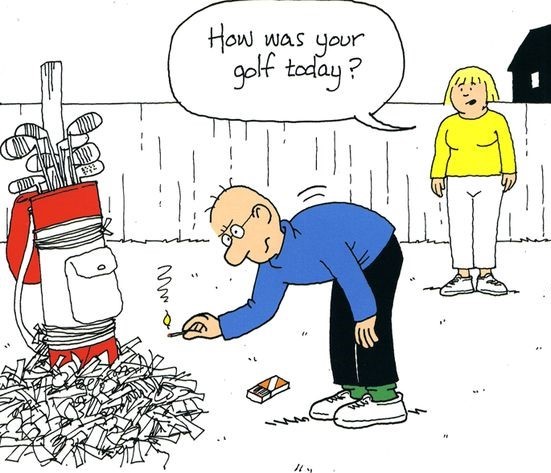
Most of the time, different parts of your nervous system work in balance, but sometimes things can get out of whack.
What’s happening in your body if you’re feeling faint? Maybe it’s a bride standing in a hot chapel, or an exhausted runner after a race. It could be someone watching a medical procedure on television or a donor at a blood drive. Maybe you’ve even experienced it yourself. You start to feel lightheaded, your stomach may hurt, your palms are sweaty, your vision closes in, your ears start to ring …. Then you wake up on the floor, staring up the ceiling, and realize you’ve fainted.
What happened?
Fainting, or what medics more technically call syncope, can be caused by a number of factors. Ultimately it comes down to not enough blood getting to your brain. Sufficient blood pressure is necessary in order to deliver blood and therefore oxygen, to all of the tissues in your body. The brain, which when you’re sitting or standing is above the level of your heart, especially relies on sufficient pressure to overcome gravity and drive blood up to your head.
So what can interrupt that process and cause you to hit the deck before you even know what’s going on?

The vagus nerve helps carry out a number of unconscious actions as part of the autonomic nervous system. By far the most common trigger for fainting is a drop in blood pressure due to a strong vasovagal response. This reflex is named after the vagus nerve, which runs from your brain to your heart, lungs and digestive tract.
The vagus nerve’s job is to regulate your parasympathetic nervous system. This is one half of your autonomic nervous system, all of which works without your needing to think about it. The parasympathetic functions are often characterized as rest-and-digest. For example, in the heart, the vagus nerve releases a neurotransmitter called acetylcholine. Acetylcholine binds to special pacemaker cells to slow the heart rate down. Behaviours such as deep, slow breathing during yoga try to increase parasympathetic activity, slowing the heart and leading to a more relaxed state.
While relaxation is a good thing, slowing the heart down too much is not good when it leads to a brief loss of consciousness. You need your heart rate to be a certain number of beats per minute in order to contribute adequately to your overall blood pressure.
The other half of your autonomic nervous system is the sympathetic nervous system. It’s responsible for the fight-or-flight response, the functional opposite of the parasympathetic nervous system. The sympathetic nervous system makes sure the small blood vessels in your body’s tissue maintain a baseline level of constriction. This resistance as blood flows through all your narrow blood vessels contributes to sufficient blood pressure for the whole system. An increase in parasympathetic activity reverses this resistance, allowing blood to linger in the peripheral tissues rather than heading to the heart and brain. A lack of resistance, along with the lowered heart rate, causes a dramatic decrease in blood pressure.
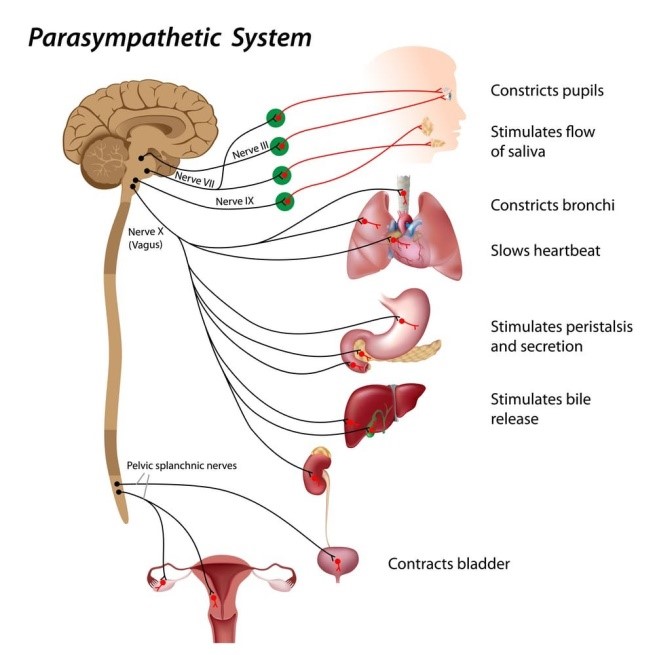
And you’ve fainted, or more technically, experienced a neurocardiogenic syncope. While sometimes embarrassing, it’s fairly common and, in itself, not overly dangerous.
When a Sight or Sound is the Trigger.
The physical causes of fainting make logical sense, but there’s some psychology involved here, too. Think about someone who faints at the sight of blood. What’s going on there that can lead to this overactive vasovagal response? Typically, when the body senses an initial stress, like seeing blood, it triggers a fear-filled response that increases sympathetic nervous system activity and the heart rate rises. The body reflexively compensates by increasing parasympathetic activity to slow the heart rate back toward normal. But if the parasympathetic system overcompensates and lowers the heart rate too much, blood pressure can decrease too much, the brain gets less oxygen and down you go.
Whatever the cause of the fainting spell, the loss of consciousness is typically brief; most people will come to immediately after hitting the floor or even slumping over in a chair. In this sense, some researchers have suggested that fainting is protective. Once lying down, there’s no longer a gravitational challenge in delivering blood to the brain, it’s now at the same level as the heart, and, if one were actually haemorrhaging, or losing blood, the lying down, motionless posture would preserve blood and reduce further injury. The process of going from standing or sitting to lying on the floor is actually one of the more dangerous aspects of fainting, though. Individuals may hit their head or other body parts on the way down, causing injury.
The idea that fainting may be related to the potential for blood loss, rather than a response to needles themselves or a medical procedure in general, has been a topic of recent investigations. In one study of healthy people, watching a video of a blood draw led to slightly greater activation of the parasympathetic response than did watching a very similar video of an injection, suggesting there is something special about the blood itself. This same research group has also shown that, if a person believes they are able to stop the procedure at any time, vasovagal symptoms can be minimized. This suggests the feeling of fear or lack of control may contribute to the severity of people’s responses. All the different causes for fainting and all the various reasons one person might be predisposed remain unclear, although it’s well accepted by scientists that females are more likely to experience syncope.
What are some of the strategies that can help prevent fainting?
-
Undergo procedures lying down in the supine position. If you do feel faint, bend your knees or elevate your legs to facilitate blood flow to your brain.
-
Contract the muscles in your arms and legs to help move blood back to the heart and brain.
-
Stay well hydrated to maintain sufficient overall blood volume.
Remember that an occasional episode of vasovagal syncope is likely not of concern, as long as you haven’t been injured in the process, but if fainting occurs repeatedly, it’s worth scheduling a medical exam.

As you get on a bit, you gradually lose a few things, hair, smooth skin, the ability to get up off the floor, eye sight, sex appeal and for some unknown reason - balance. Where once it was good fun and as easy as pie to walk along the cracks in the footpath, as you age it’s hard to just walk a straight line without getting the wobbles.
We all need balance in our lives. Literally. But having good balance is more complex than you may realize. It involves the integration of various sensory and motor systems, including: vision (to perceive direction and motion), the vestibular system in the inner ear (which monitors motion and provides orientation clues, such as which way is up) and what’s called “proprioception” (the ability to sense where your body is in space). To stay steady, you also need good muscle strength and reaction time.
If any of these systems are not functioning properly, you can lose your balance even while just walking or standing up. In fact, about one in three people over age 65 (not living in nursing homes) fall at least once a year and 10 to 15 percent of these falls result in serious injury. Falls, of course, are a major cause of fractures, which increase as people get older. Older people often have poor balance due to loss of muscle strength and joint flexibility, as well as reduced vision and reaction time and the risk of inner ear dysfunction, which can throw you off balance.
Lack of exercise, alcohol, obesity, neuropathy (nerve damage) in the lower legs, certain drugs or medical conditions, even wearing the wrong glasses, can also interfere with balance, at any age.
Exercise, such as brisk walking, running and strength training, helps improve balance. Any activity that increases strength, especially in your lower limbs, as well as agility, is worthwhile. Even golf, aquatic exercise, interactive dance video games, and Feldenkrais (a movement therapy) have been shown to help.
Below are some other good things you can do for your balance. The equipment needed is available at sporting-goods stores or online; gyms and physical therapy offices may also sell it.
Before you start: If you have serious balance problems, it’s a good idea to begin with a trainer at a gym or a physical therapist. At home, be sure to have someone “spot” you or at least have something to hold onto so you don’t fall.
Balance on a board: Also called wobble or rocker boards, balance boards are wooden or plastic devices that sit on a short base that acts as a fulcrum. By shifting your weight from side to side or front to back, you try to balance without rocking too much. For more of a challenge, do it with your eyes closed. Boards cost about $20 to $60 (or more, for a "professional" one). A bosu ball is also good.
Walk on cobblestones: Chinese tradition holds that walking on uneven paths is good for balance. A study at the Oregon Research Institute gave support to the practice. It found that healthy but sedentary older adults significantly improved their balance by walking on special cobblestone mats. Aim for half an hour of cobblestone walking two or three times a week, in addition to regular walking and strengthening exercise. If you have no cobblestone paths in your neighbourhood, you can buy long walking mats like those used in the study for about $50.
Have a ball: Made of vinyl and filled with air, a large exercise ball (also called a stability ball or physioball) is another handy helper for improving balance. At home, be sure you have plenty of room so you don’t tumble onto a piece of furniture. The balls come in different sizes (based on your height); most cost about $15 to $30.
Try a mini-trampoline: Training on a mini-trampoline for 14 weeks increased balance in a study published in the Journal of Electromyography and Kinesiology in 2011. After participating in the program, older people were better able to regain their footing in a forward fall experiment—an ability that can help prevent a serious injury in real life. If you are very unsteady on your feet, though, this may not be a good choice. Mini-trampolines cost about $40 to $80; some have handrails.
Bottom line: If you are over 60, ask your doctor to check your sense of balance. There are many ways to improve your balance and thus reduce the risk of falls. Find what you like but also mix it up.
Another thing to consider for fall prevention is a vitamin D supplement. Studies suggest that adequate vitamin D reduces the risk of falls by increasing muscle strength in the legs. The recommended daily intake is 600 IU up to age 70 and 800 IU for those older, but we recommend 800 to 1,000 IU a day for most people. People who are deficient may need higher doses.
Many men yearn for a better sex life, at least if the growing number of ads and websites promoting performance-boosting supplements is any measure. The formulas go by names such as ExtenZe, Stay Erect, X-Rock, Endowmax, Enzyte and ArginMax. Some are marketed as “natural alternatives” to Viagra (sildenafil) and other drugs used to treat erectile dysfunction, the repeated inability to have and/or maintain an erection sufficient for sexual intercourse. Others make vaguer claims about improving sexual performance (“drive women wild in bed”) or none-too-subtle promises about enlarging penis size.
An erection depends on many factors, including blood supply, hormones and nerve and muscle tissue in the penis. Some ingredients found in the supplements are supposed to affect these factors, and in a few cases there’s a theoretical basis for a possible benefit. But most products contain a witch’s brew of ingredients that range from dubious to outright dangerous. The labels often don’t tell you exactly what’s inside, and rarely in what amounts. Even if they do tell you, they may not be accurate.
Here are some common ingredients marketed as sexual performance boosters.
Arginine: This amino acid, one of the building blocks of protein, enhances the effects of nitric oxide, a chemical that improves blood circulation in the body. Nitric oxide also relaxes blood vessels and smooth muscles in the penis, thus producing erections. This is also what erectile dysfunction drugs do, but it’s unknown whether enough of the supplemental arginine gets into the penis to make a difference. Indeed, some studies have found little or no improvement compared to a placebo.
Prohormones: Many prohormones (hormone precursors), which are supposed to boost testosterone, are marketed as sex drive enhancers as well as muscle-building aids. In 2005, U.S. federal law banned over-the-counter sale of 25 of these compounds, including androstenedione, because of serious risks. These are now controlled substances, like anabolic steroids. Marketers have wiggled around the law, however, and produced other “natural testosterone boosters.” Two are DHEA (dehydroepiandrosterone) and the herb Tribulus terrestris. It’s unclear how effective any of these are, if at all. If they do act like testosterone or affect other hormones, they could have serious long-term adverse effects.
Yohimbe: Made from the bark of a West African tree, this has been used as an aphrodisiac for centuries. In pre-Viagra days, it was sometimes prescribed to treat erectile dysfunction. A standardized extract is still available by prescription, though little used today. Yohimbe dilates blood vessels and increases blood flow, and thus may improve erections. It has been shown to increase sexual arousal in rats, but has had mixed results in human studies. Side effects include a boost in blood pressure, abnormal heart rhythms, nausea, anxiety and sleeplessness. Because of safety concerns and the variability of the active ingredient, yohimbe should not be used.
Ginseng:
Long regarded as an aphrodisiac in Asia, this herb is claimed to improve
erections by dilating blood vessels and affecting nerves involved in
erections. A big problem with ginseng is its great variability. Not only
are there several types, which have different compounds and biological
properties, but different parts of the plants are used and these also
contain varying compounds. Preliminary research suggests that Korean red
ginseng may improve erectile dysfunction; other forms may not have this
effect.
Cocktails of ingredients: Many supplements contain a wide range of herbs
traditionally used as aphrodisiacs—from ginkgo, deer horn and horny goat
weed (we kid you not) to damiana, maca, muira puama (meaning “potency
wood”) and an array of vitamins and minerals, but there is little or no
solid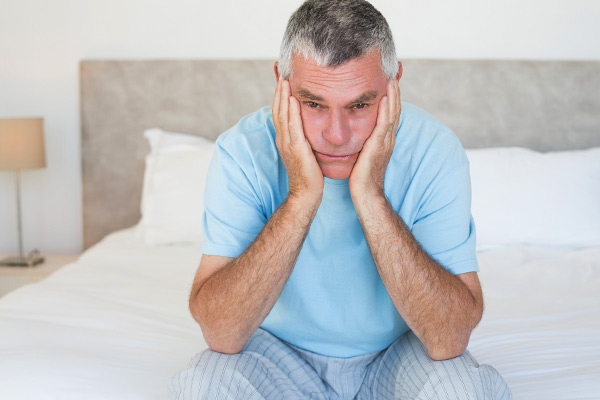 scientific evidence for any of them. Manufacturers often say they have
studies to support their claims, but these are almost always
unpublished, involve rodents or isolated cells, or are of poor quality.
For instance, they usually don’t test the products against a placebo.
scientific evidence for any of them. Manufacturers often say they have
studies to support their claims, but these are almost always
unpublished, involve rodents or isolated cells, or are of poor quality.
For instance, they usually don’t test the products against a placebo.
A few years ago, the US Food and Drug Administration (FDA) warned consumers not to use a variety of sex supplements because they were illegally laced with the active ingredients in drugs like Viagra. These compounds can interact with other medication and can be dangerous for people with certain conditions, and thus should be sold only by prescription and used under doctor supervision. The products were reformulated or taken off the market, but no one knows how safe the replacements are.
Bottom line: Supplements that are supposed to turn you into a tiger in bed are countless. Don’t fall for the claims. The side effects are largely unknown, especially when the ingredients are combined and taken by older men with existing medical conditions. In particular, experimenting with hormones, or anything that affects them, is always risky. If you have erectile dysfunction or other sexual problems, consult your doctor, not the salesperson at the health-food store or on a website.
What are the risks with sitting for too long?
Obviously, when you sit, you use less energy than you do when you stand or move. Research has linked sitting for long periods of time with a number of health concerns. They include obesity and a cluster of conditions, increased blood pressure, high blood sugar, excess body fat around the waist and abnormal cholesterol levels, that make up metabolic syndrome. Too much sitting overall and prolonged periods of sitting also seem to increase the risk of death from cardiovascular disease and cancer.
Any extended sitting, such as at a desk, behind a wheel or in front of a screen, can be harmful. An analysis of 13 studies of sitting time and activity levels found that those who sat for more than eight hours a day with no physical activity had a risk of dying similar to the risks of dying posed by obesity and smoking, however, unlike some other studies, this analysis of data from more than 1 million people found that 60 to 75 minutes of moderately intense physical activity a day countered the effects of too much sitting. Another study found that sitting time contributed little to mortality for people who were most active.
More study is needed on the effects of sitting and physical activity on health, however, it seems clear that less sitting and more moving overall contribute to better health. You might start by simply standing rather than sitting when you have the chance or finding ways to walk while you work. For example:
-
Take a break from sitting every 30 minutes.
-
Stand while talking on the phone or watching television.
-
If you work at a desk, try a standing desk — or improvise with a high table or counter.
-
Walk with your colleagues for meetings rather than sitting in a conference room.
The impact of movement, even leisurely movement, can be profound. For starters, you'll burn more calories. This might lead to weight loss and increased energy. Also, physical activity helps maintain muscle tone, your ability to move and your mental well-being, especially as you age.
If you're taking a blood thinner, is it still possible to get a blood clot?
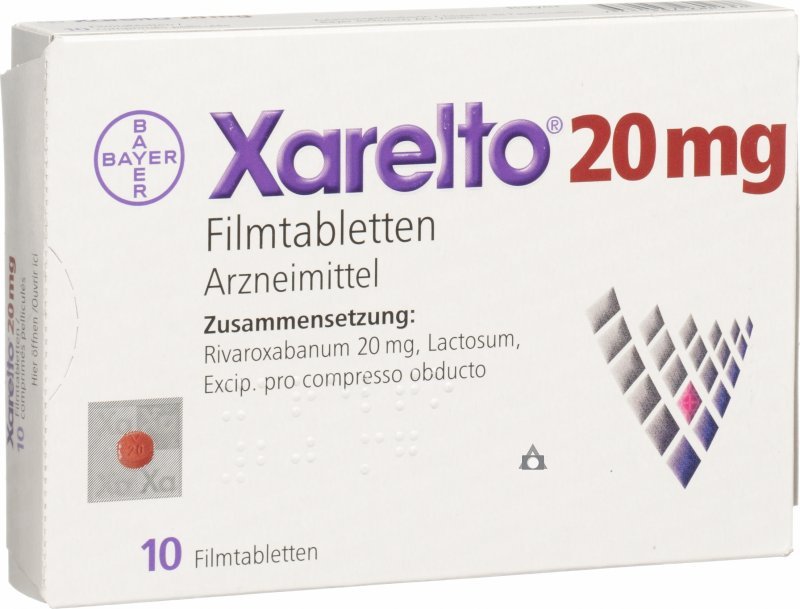
Yes. Medications that are commonly called blood thinners, such as aspirin, warfarin (Coumadin, Jantoven), dabigatran (Pradaxa), rivaroxaban (Xarelto), apixaban (Eliquis) and heparin, significantly decrease your risk of blood clotting, but will not decrease the risk to zero.
These medications must be taken exactly as directed to work safely and effectively. Taking too little of these medications may not be effective, and taking too much can lead to serious bleeding. Also, blood thinners may not be able to lessen the strong blood-clotting tendency of an underlying disease, such as cancer.
Interactions with other medications, food and alcohol are common with warfarin. These interactions are less so with other blood-thinning medications, however, any interactions may decrease the effectiveness of your blood thinner, making you more likely to develop blood clots. If you take a blood thinner, be sure to follow your doctor's advice on dosing and ask about foods and other medications, including over-the-counter drugs and herbal supplements, that may interfere with safety and efficacy of the blood thinner.
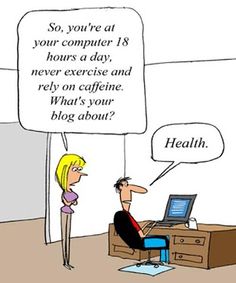
Back Go to page: 1 2 3 4 5 6 7 8 9 10 11 12 13 14 15 16 17 18 19 20 Forward